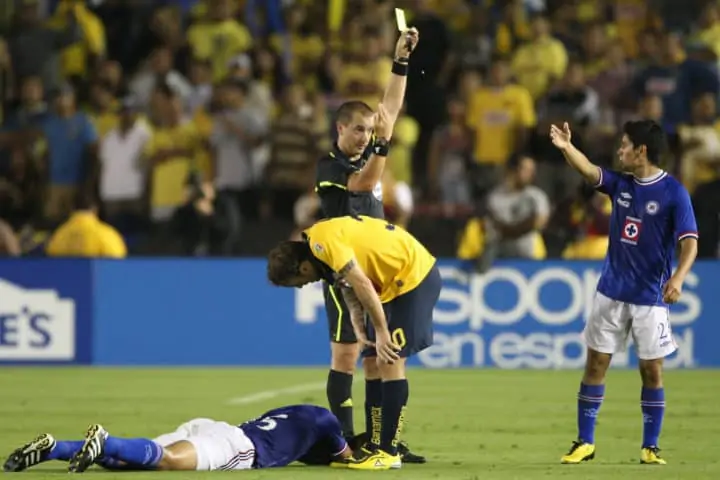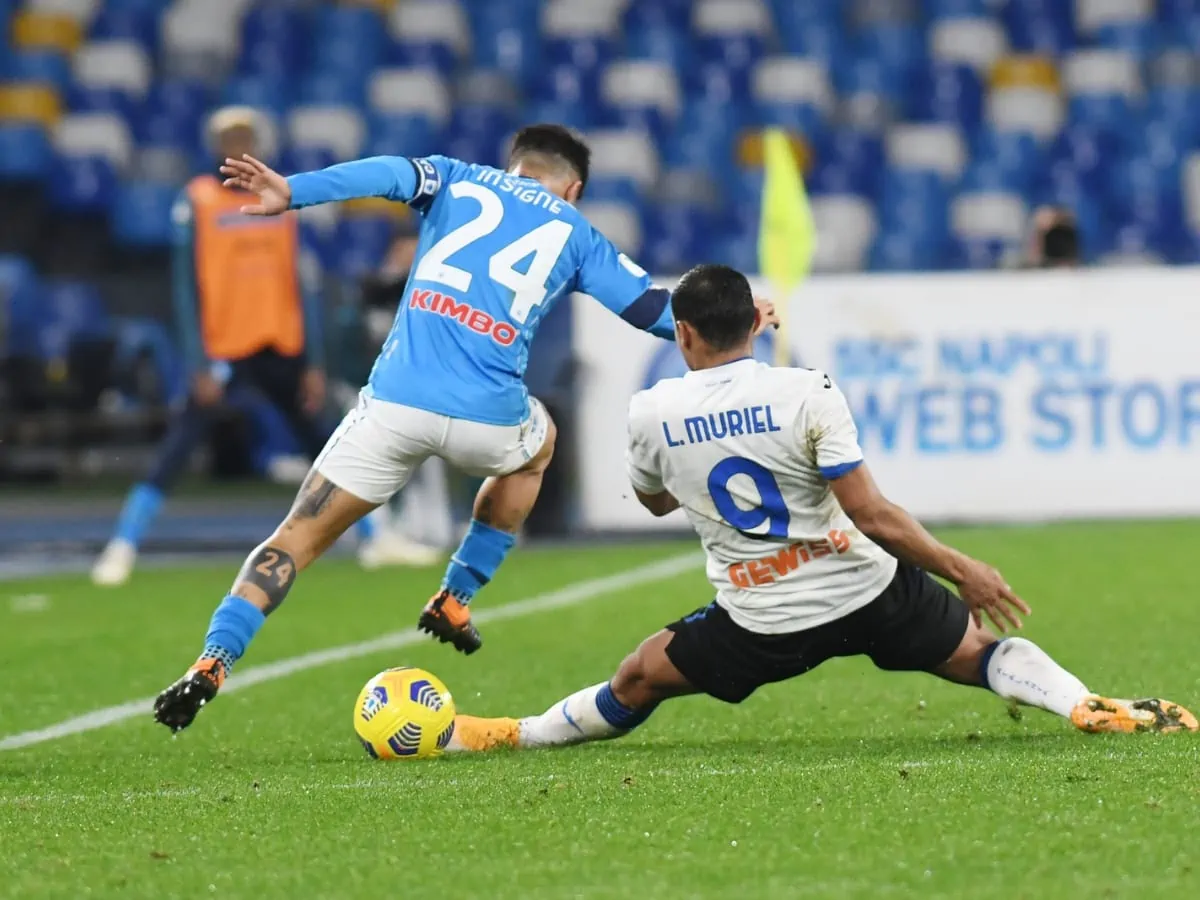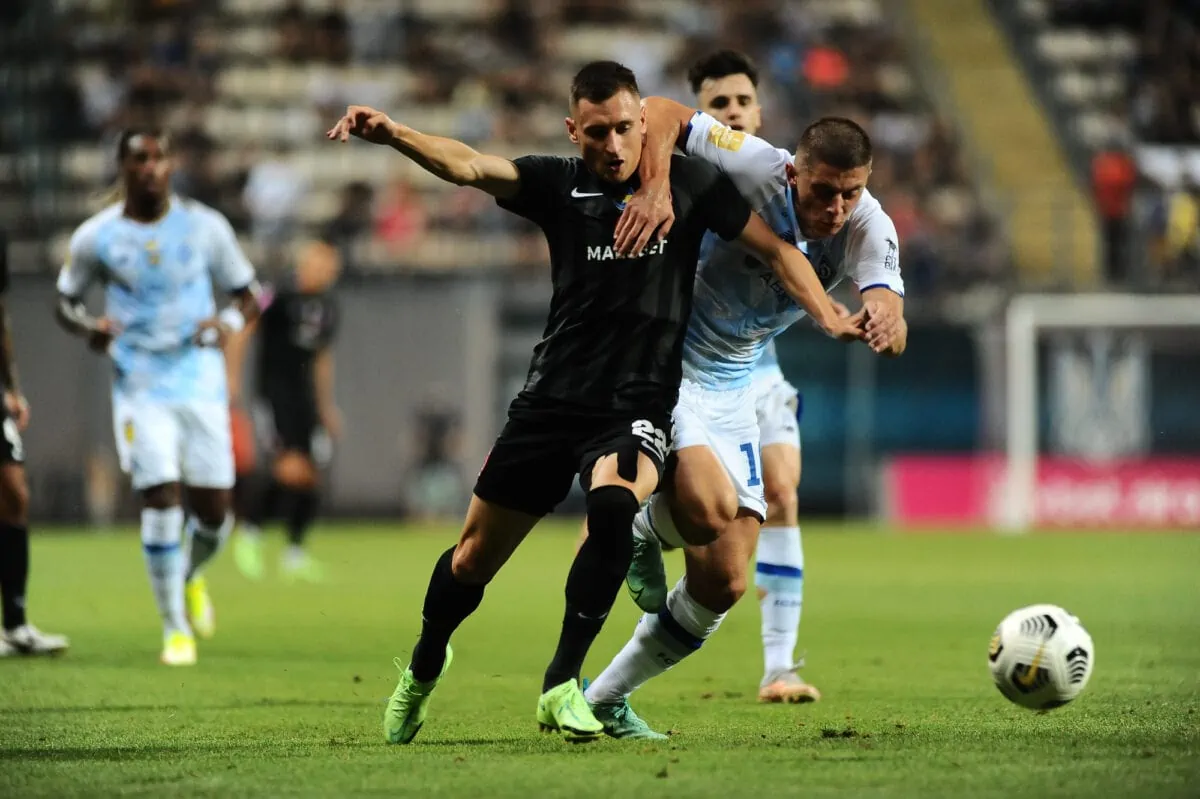Share the post "Can You Push in Soccer (Use Arms/Shoulders)"
One of the first things children are taught when they first start playing soccer is that you can’t use your hands. However, some people are unsure what other body parts they can use during a game.
Are you allowed to use your elbows or shoulders? Or your thigh?
In this article, we will go through the following to help you better understand if you can use your elbows during a soccer match. These include:
- Can you push in soccer?
- Can you use your shoulder in soccer?
- Can you use your arms in soccer?
- Can you use your hands in soccer?
If you are interested in learning more about the game of soccer and what body parts you can and can’t use, then we have everything you need right here. Some of the answers will surprise you!

Can you use your elbows in soccer?
The use of elbows in soccer, like pushing, is not allowed during a match. If a soccer player does use their elbows with the clear intent of trying to injure or hurt another player, then the match official will penalize that player.
Can you use your shoulder in soccer?
In short yes you can if you are contesting a ball with another player, and you can even score with your shoulder as long as it doesn’t touch low enough on your arm.
Because of the style of some soccer leagues around the world, physical contact is a given in just about every league on the planet.
It is very common, and it is allowed between two players on a soccer pitch.
Whether two players are contesting a corner kick or if a team is trying to kill time and it is holding off a player near the corner flag, you can use your shoulder to position yourself and hold off your opponent.
This is of course as long as it is in line with the rules and is not over the top, then you are allowed to use your shoulders during a soccer match.

Can you use your arms in soccer?
In the laws of the game, it clearly states you cannot handle the ball. The rule states that for a handball to be called, it includes the use of any part of your arm and that ranges from the shoulder all the way down to the fingertips.
A soccer ball that is kicked by an opposition player which then hits the arm of another player is not deemed handball and this is even if the team gets a clear advantage from the ball hitting the arm.
Can you use your hands in soccer?
When a player deliberately uses his/her hands to make contact with the ball it is considered a foul, otherwise, it is not.
The FIFA Laws of the Game state that there is nothing illegal about a player’s hand coming into contact with the ball.
It is only when the contact is deliberate that a foul is then called against the player.
This is because if a player deliberately uses their hand or arm to manipulate the ball, it can result in an advantage to their team and can even lead to a goal. This is why is it a foul.
The introduction of VAR has helped to mitigate this with several cameras positioned all around the ground to pick up any potential handballs that might occur.
What happens if you touch a soccer ball with your hands?
Any number of advantages that are deemed to be unfair to an opposition team is considered a foul. These fouls can include:
- Pushing
- Tripping
- Touching the ball with your hands
Penalty kicks or free kicks will then be awarded to the opposing team and depending on what the offense is, a yellow card or red card will then be issued by the main match official.

Is it legal to push in soccer?
Pushing another player is a foul in soccer and is not allowed. There is one way that a player can push another player and it is not a foul.
It is called fair charging and it is when two players are contesting for the soccer ball. It could be two players pushing at a corner kick or if a player is shielding the ball from another player.
This is not a foul because both players have a right to try and contest the ball and win it for their team.
So, bumping each other to get a better position in order to get the ball first is allowed in the laws of the game.
Why can goalkeepers use their hands, but other players can’t?
A keeper can use their hands as it is one of the ways they can save shots at goal.
The goalkeeper can also use their feet to stop shots and is only allowed to use his/her hands when they are inside their own penalty area. Use of hands outside the area for keepers results in a foul.
Since outfield players cannot use their hands at all while playing, this is why keepers are allowed to use their hands, yet outfield players are not.
Because outfield players do not save shots at goal unless they are on the last line of defense.
Is holding legal in soccer?
Yes, holding is legal in soccer. As long as players do not hold another player as to stop them from getting to the ball first or to restrict the movement of the player.
Pushing as well as legal as you can use your hands to move a player out of the way. As long as it is not excessive.
A charge is legal too. This is when a player charges at an opponent and can be done without fouling another player.
Is pushing a foul in soccer?
Pushing, kicking, and tripping are all fouls in the game of soccer. Some physical contact is allowed and is quite common during a game.
A foul will be called if the referee decides that the player used unfair force.
A referee will also call a foul if a player is deemed careless or reckless when using a shoulder or pushing another player off the ball.
Sources:
Laws of the Game | Play Football
Share the post "Can You Push in Soccer (Use Arms/Shoulders)"
Joel is a seasoned soccer journalist and analyst with many years of experience in the field. Joel specializes in game analysis, player profiles, transfer news, and has a keen eye for the tactical nuances of the game. He played at various levels in the game and coached teams - he is happy to share his insight with you.



